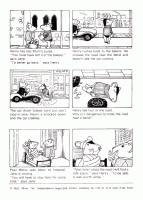The Grasshopper Animators – part 3
The Grasshopper Animators
Part Three
THE FINAL PART OF THIS SERIES BY KEN CLARK TELLS HOW THE GROUP SOLVED THE MAMMOTH TASK OF ANIMATING THE BATTLE OF WANGAPORE.
When Sir J. Athur Rank’s film Empire ran into financial trouble, he was forced to close down uneconomic enterprises. G.B. Animation at Cookham was one of the Units that came under the axe. A move which effectively prevented a new series of coloured cartoons from reaching the cinema screens. Titled MAGICAL PAINTBOX, they were to have been a fully animated extension to Henry Stringer’s MUSICAL PAINTBOX series.

